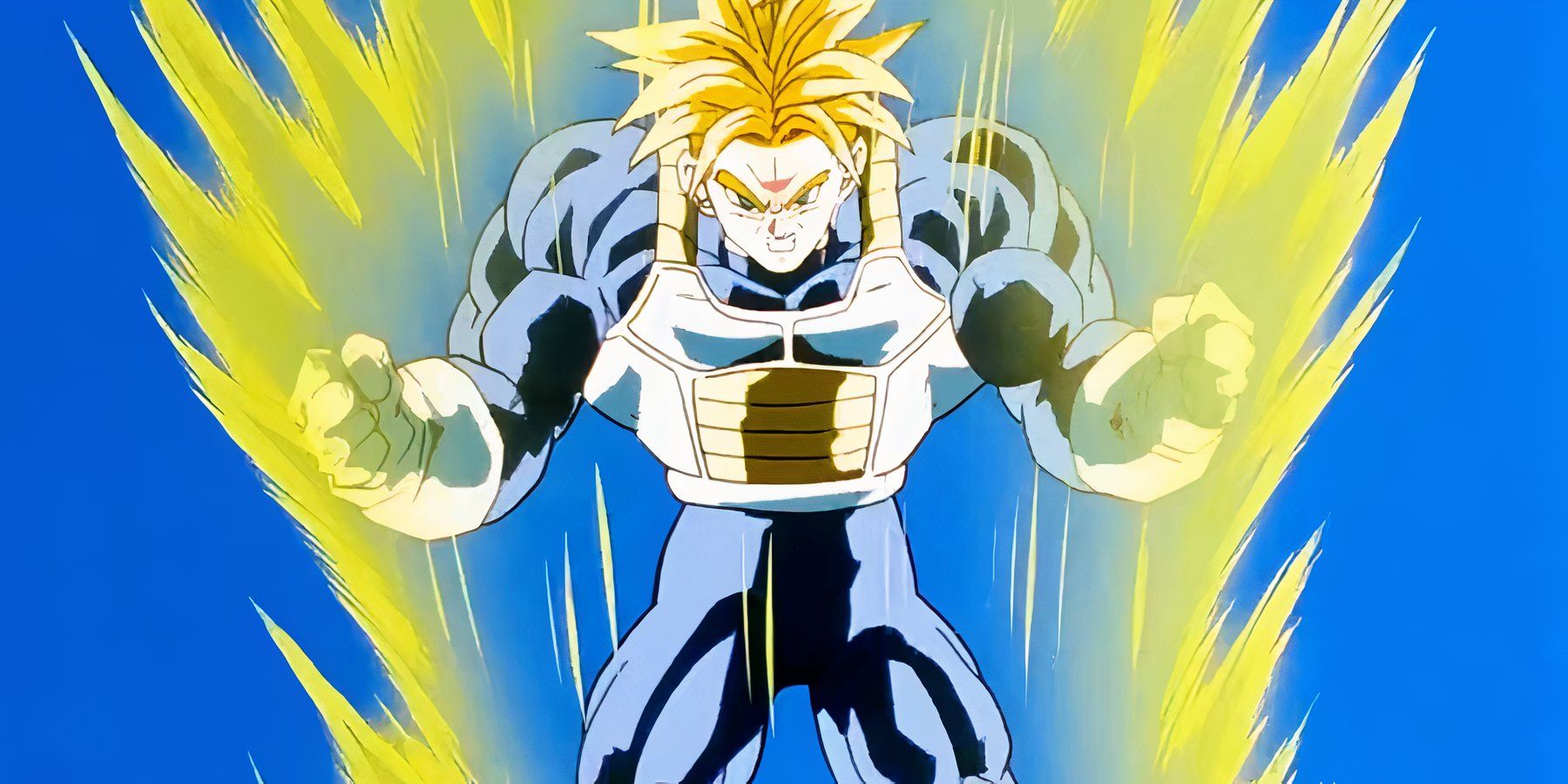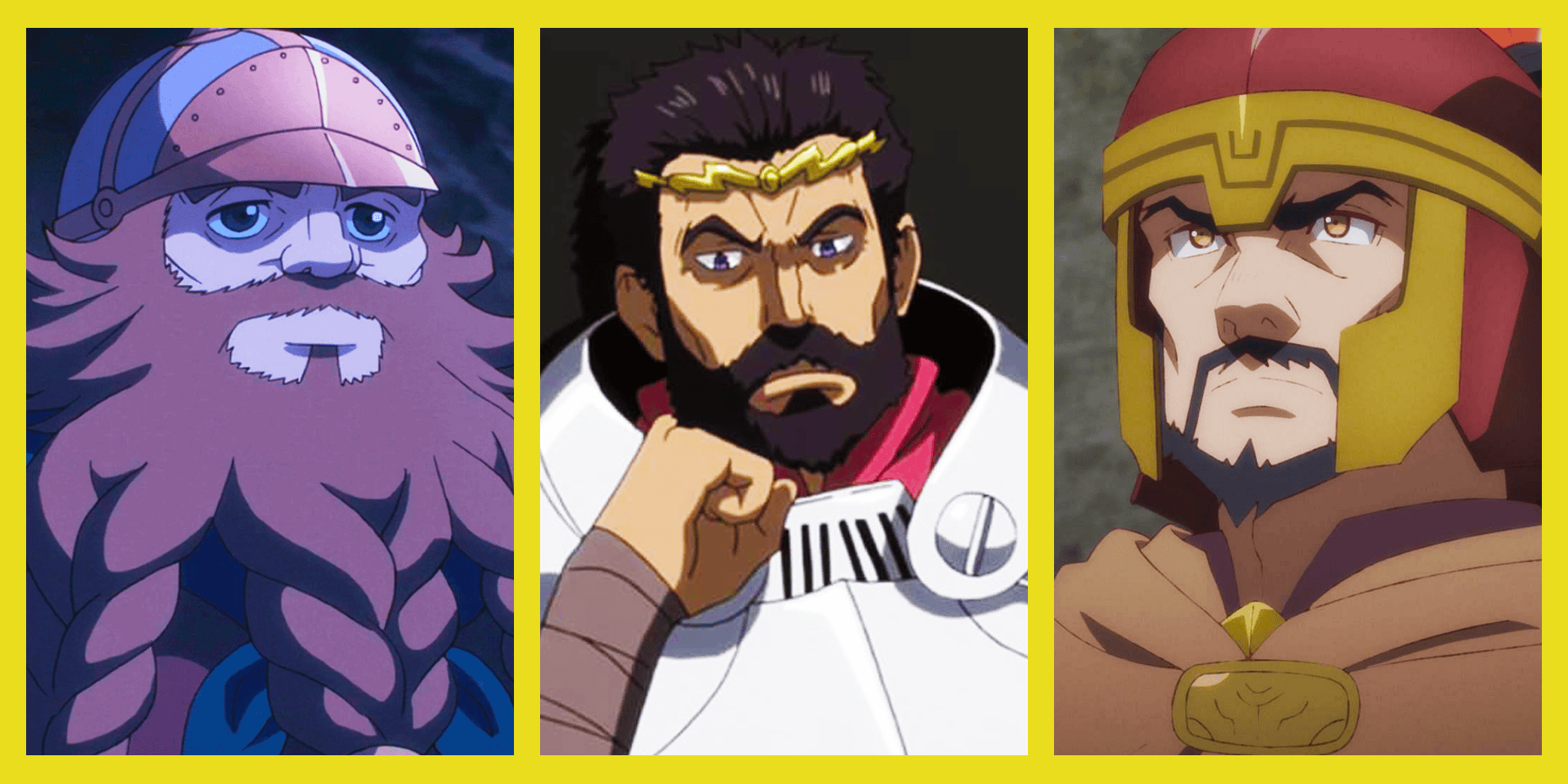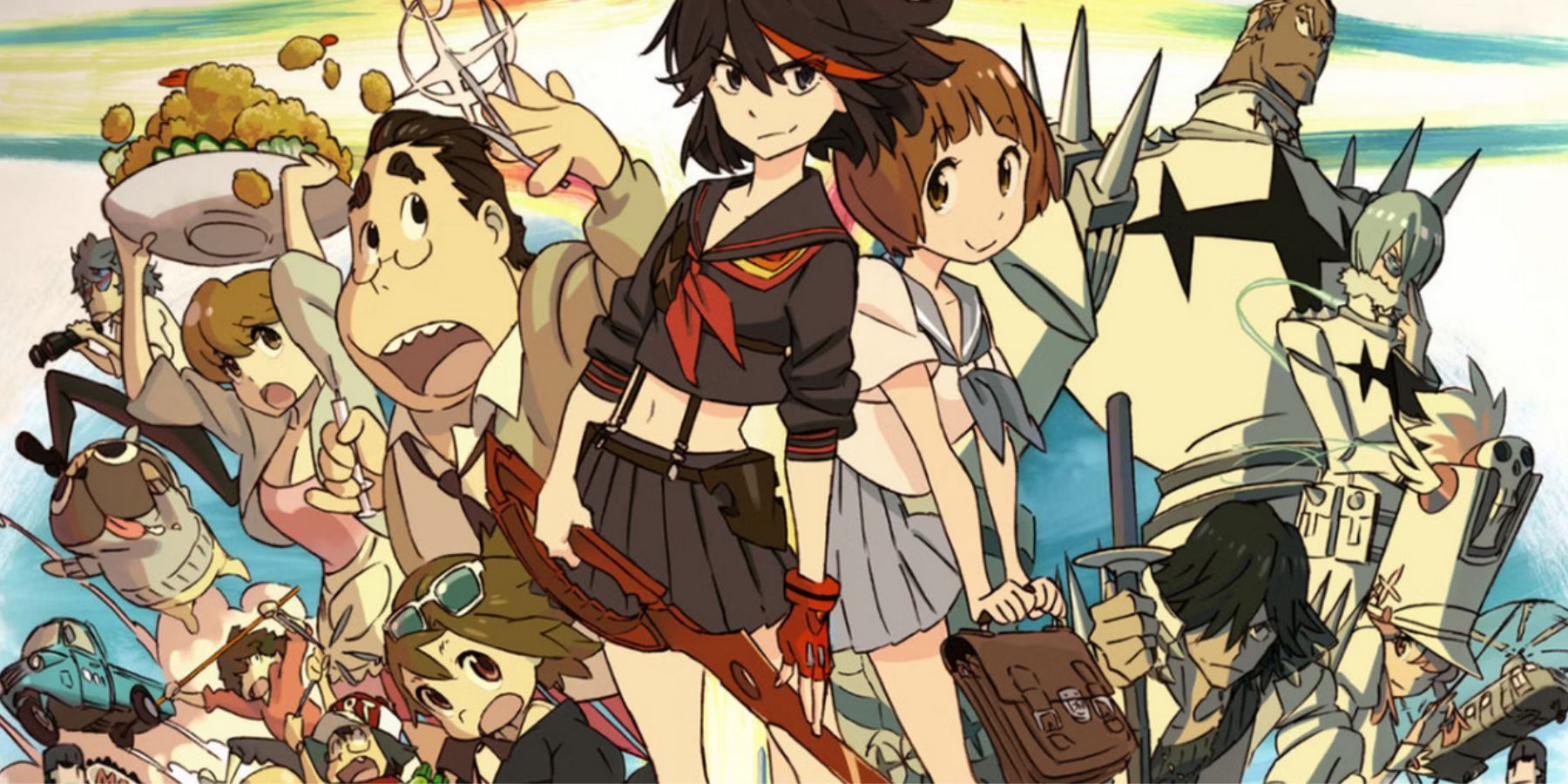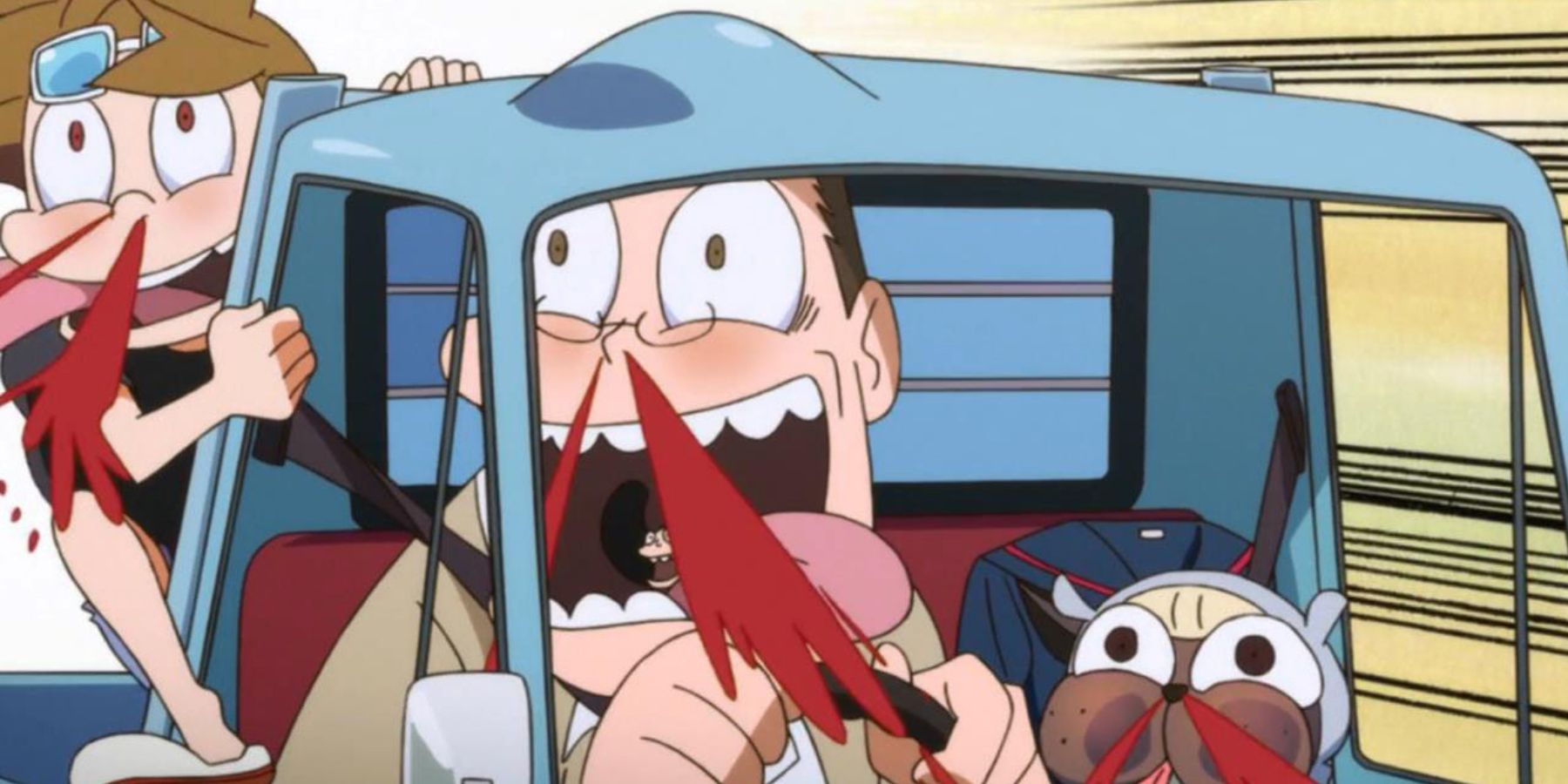The rabbit hole goes deep when it comes to the messages spread by Kill La Kill. This brilliant satire evokes polarized opinions and can be seen as ambiguous; however, it manages to use sexualization as a way to approach and challenge this problem, embracing it as a storytelling device. Viewers can become shocked by the skimpy outfits and all the nudity at first, but the narrative and the visuals connect all the important points and somewhat hidden messages of this hilarious animation, with outstanding visuals, over-the-top fighting sequences, and powerful manifestoes.
Sex, violence, religion, freedom, fascism, desire for genuine self-expression, and self-realization are some of the themes covered by Kill La Kill. The nature of Kill La Kill, which is heavily based on what could be regarded as pure fanservice, which is frequently pointed out by its detractors, like that of a good satire, is that of embracing the apparent fanservice and sexualization blatantly to deliver its ultimate messages. Therefore, it can be stated that the content of the plot, as well as the context within the narrative of the upfront sexuality of the characters, should be analyzed through an attempt at an unbiased view.
Sexualization: Evil Is In The Eyes of The Beholder
Senketsu, which is Ryuuko’s Kamui, is a seifuku, that is, a schoolgirl uniform. The image of the seifuku per se is already sexualized by the male gaze in society. When Satsuki appears wearing her Junketsu, her Kamui, she demands and obtains respect and awe, while Ryuuko gets nosebleeds and the guys drool all over her. The explanation for that comes later, as the plot and narrative evolve, but it comes to cement the idea that evil is indeed in the eyes of the beholders. The sexualization of schoolgirl uniforms speaks to a number of things, namely infantilism but also the inherent pedophilia that exists within aspects of Asian fetish. The favoritism for the sailor suit for women's uniforms in fashion and film dates back to the 1920s.
Noteworthy is the use of nosebleeds in Kill La Kill to emphasize this point. In anime, this is a common element. Healthy young men, who have no other sexual outlet, often suffer nosebleeds when they see the naked female body or even a pair of panties.
Subverting The Oversexualized And Fetishized Schoolgirl Uniform
Uniforms are originally meant to convey ideas and values such as regulation, unity, and discipline, but they can be simultaneously regarded as the embodiment of sexual, erotic, and fetishized objects of desire. This sexualization and objectification are visually replicated in several media outlets, and it is not different when it comes to anime. In the 1970s, fetishism trickled into popular culture, and, at that time, the fashion industry adopted fetish clothing, including sexualized uniforms. An example of that is the use by Thierry Mugler of equestrienne and military uniforms.
Kill La Kill not only embraces sexualization, but inserts that into the context of fashion and fascism either, and, even if the authors did not mean to make that connection, it is there and no one can deny that.
The fetishization of uniforms happens both for males and females; however, women’s uniforms are strong objects of fetishism. Usually, a man in uniform evokes ideas of masculinity and power. The more specific problem with the fetishized schoolgirl uniform is that underage girls are sexualized. In general, women wearing uniforms are strongly charged with concepts of gender, sexuality, and sensuality, extremely imbued with erotic possibilities, which is shown when Ryuuko first uses her Senketsu, without owning it yet – that it, when she finally embraces and owns her sexuality, she becomes powerful, and it can be affirmed that, through that and all of the points used in the imagery, storytelling and plot contribute to confirm that sexualization is used as an empowerment tool for women in Kill La Kill.
After the Sailor Moon-like transformation, Senketsu resembles even more fetish wear, with an extremely short skirt and shoulder straps only for minimum bodily protection, not much different than the typical bikini-like armor usually present in male-dominated fantasy entertainment, not only in anime but also in Western movies, cartoons and video games. At this point, Ryuuko is still embarrassed by Senketsu, since she views the female body as erotic and agrees with what her colleagues at school say, that it is exhibitionist and fetishized. Then, the uniform itself points out to her that her fighting capabilities are very inferior as compared to those of Satsuki because she embraces the full power and symbolism of her Junketsu.
Go Nagai addressed the theme in a 2008 interview, when he said, “What I drew was not eroticism. It was all about Japan’s culture of shame. The characters want to show what they’ve got but are too embarrassed to do so. It’s all about the tug of war between men and women.”
His statement regarding his works can also be applied to Kill La Kill, which, considering its entirety, has a feminist vibe, expressing that there is nothing wrong with women using skimpy clothes or not, no problem with nudity itself, as a strong criticism to old-fashioned and traditionally biased and erotically-charged points of views.
It becomes even clearer that sexualization, especially with the schoolgirl uniform, is an empowerment tool with the declaration of Satsuki herself, which points out that it is not her fault that men will stare at her body, when she, therefore, becomes completely rid of guilt for wearing a such revealing outfit, because it means empowerment through the appropriation of what men tend to regard as sexual. Nobody is responsible for the actions of others. Just like the victim of stalking or sexual harassment is and will always be the victim, not a villain, never “asking” for these types of crimes to happen.
Resisting Norms
A tale of women’s growth and maturation, Kill La Kill is a cry of resistance to normative sexual practice and female imagery, at first emphasized by Satsuki’s rejection of mass sexual values over her outfit, then joined by Ryuuko. They become empowered and are symbols of resistance to the definition of sexuality coming from the outside, an empowering statement against the regulatory powers that aim to limit women’s pride in their sexuality.
Kill La Kill also embraces, then, the feminist declaration used with the scant dress mode in protests against the values of the masses, and, through the narrative, actions, and compelling storytelling of the anime, and the journeys of both girls, the once fetishized schoolgirl uniforms end up becoming even more empowering than your typical superhero suit.






.jpg)
